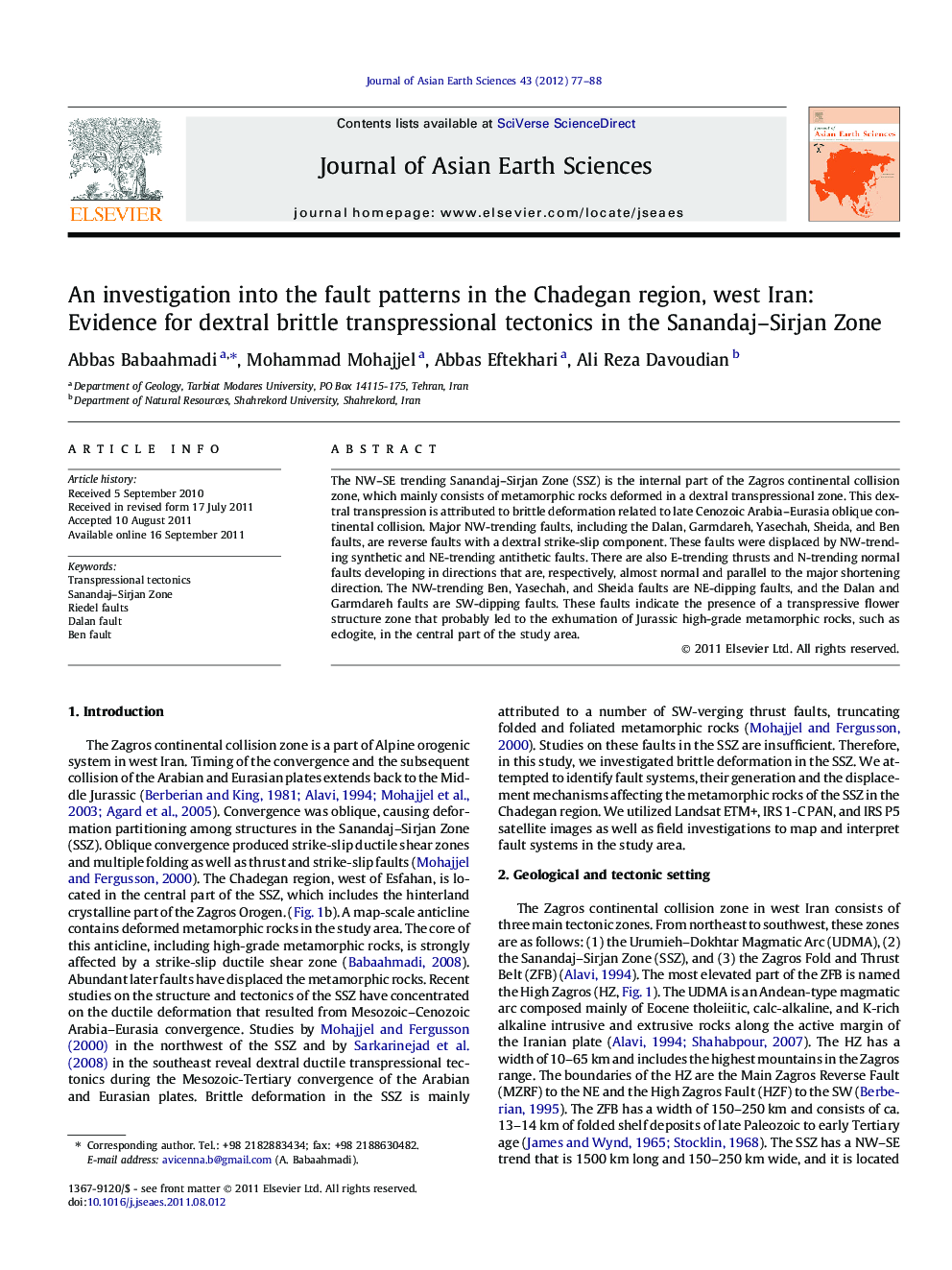| Article ID | Journal | Published Year | Pages | File Type |
|---|---|---|---|---|
| 4731623 | Journal of Asian Earth Sciences | 2012 | 12 Pages |
The NW–SE trending Sanandaj–Sirjan Zone (SSZ) is the internal part of the Zagros continental collision zone, which mainly consists of metamorphic rocks deformed in a dextral transpressional zone. This dextral transpression is attributed to brittle deformation related to late Cenozoic Arabia–Eurasia oblique continental collision. Major NW-trending faults, including the Dalan, Garmdareh, Yasechah, Sheida, and Ben faults, are reverse faults with a dextral strike-slip component. These faults were displaced by NW-trending synthetic and NE-trending antithetic faults. There are also E-trending thrusts and N-trending normal faults developing in directions that are, respectively, almost normal and parallel to the major shortening direction. The NW-trending Ben, Yasechah, and Sheida faults are NE-dipping faults, and the Dalan and Garmdareh faults are SW-dipping faults. These faults indicate the presence of a transpressive flower structure zone that probably led to the exhumation of Jurassic high-grade metamorphic rocks, such as eclogite, in the central part of the study area.
► Major faults are dextral reverse faults generating a dextral transpressional zone. ► NW-trending synthetic and NE-trending antithetic faults displace the major faults. ► Major faults have opposite dips, indicating a transpressive flower structure.
